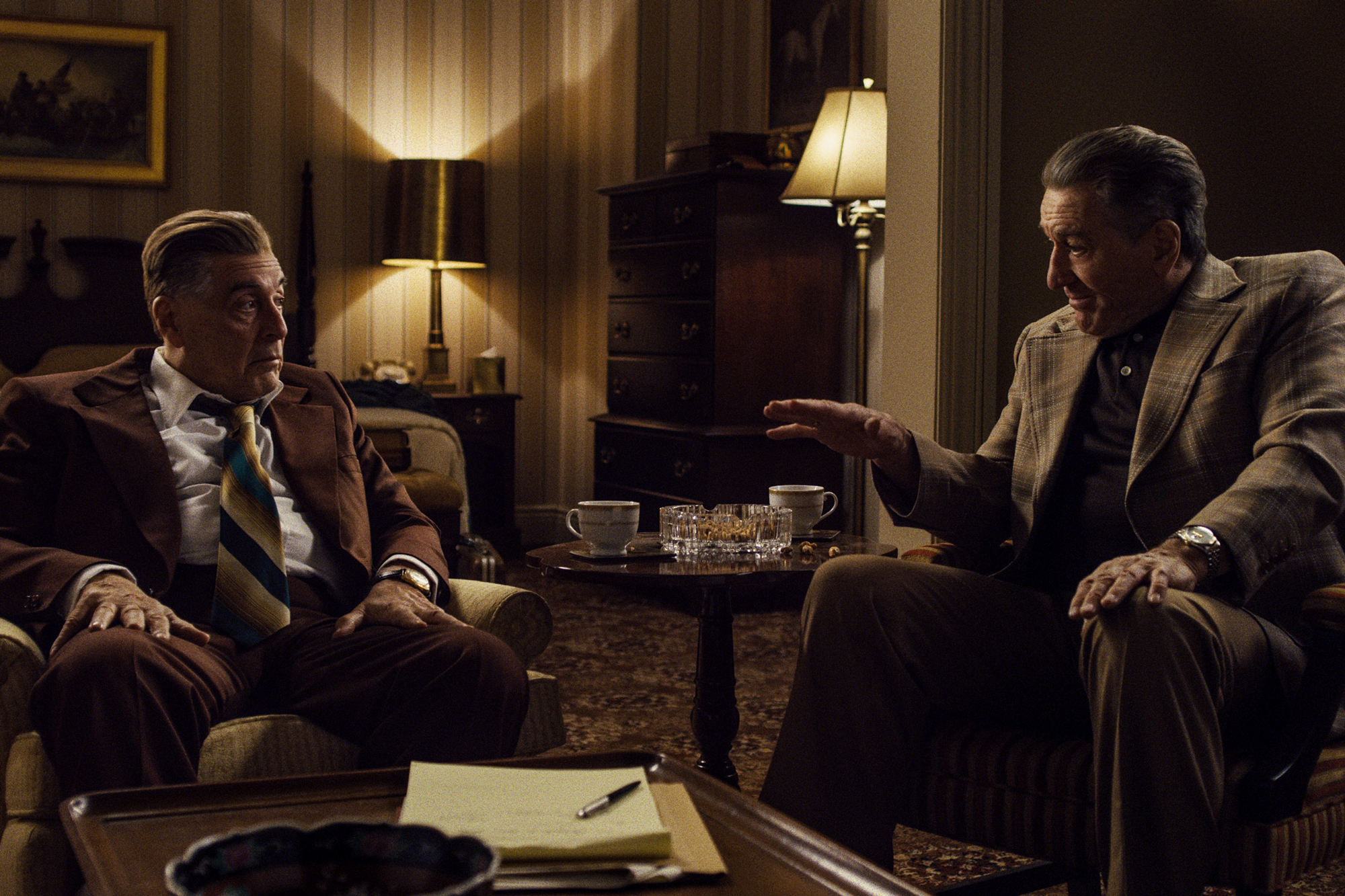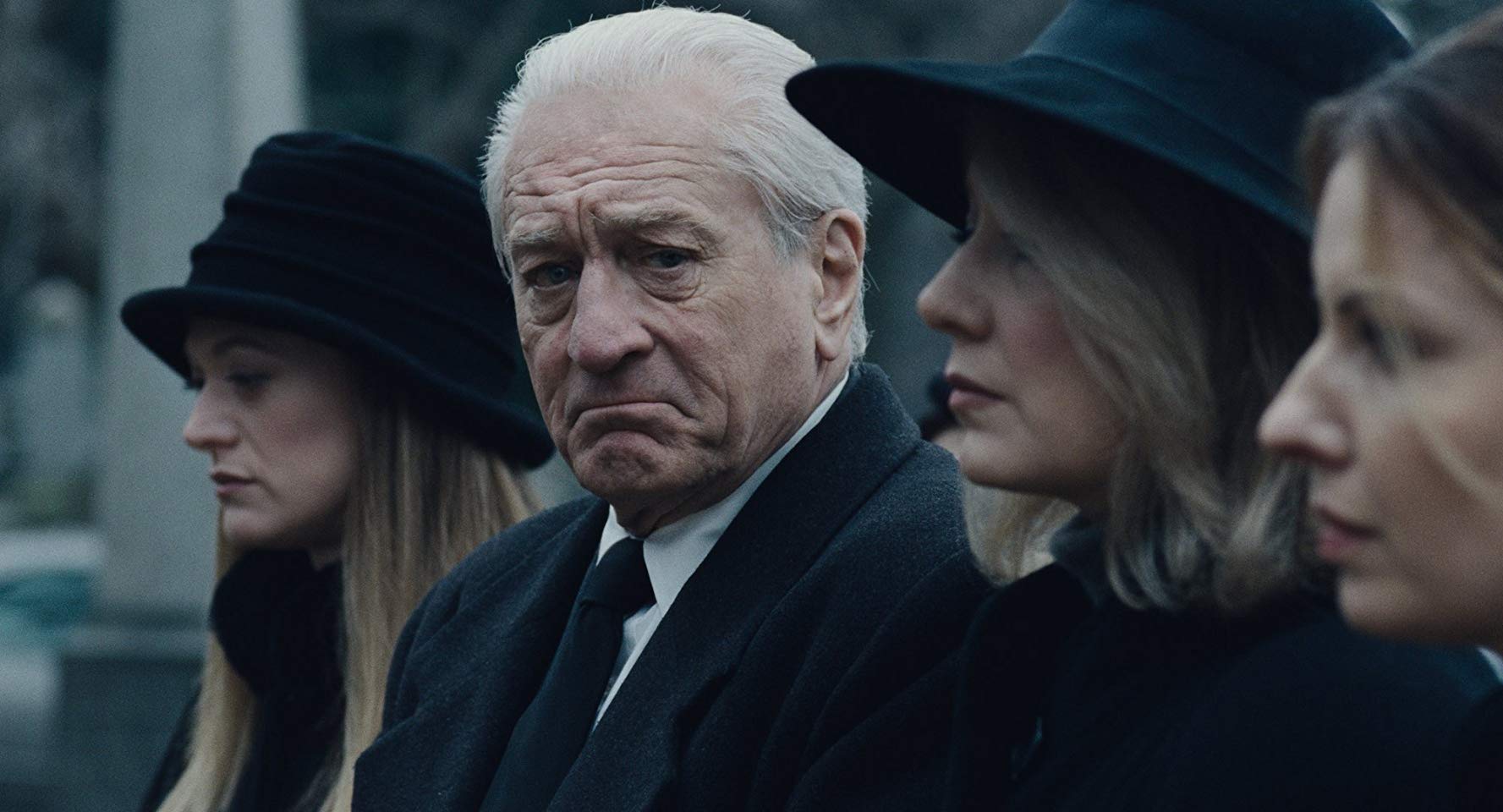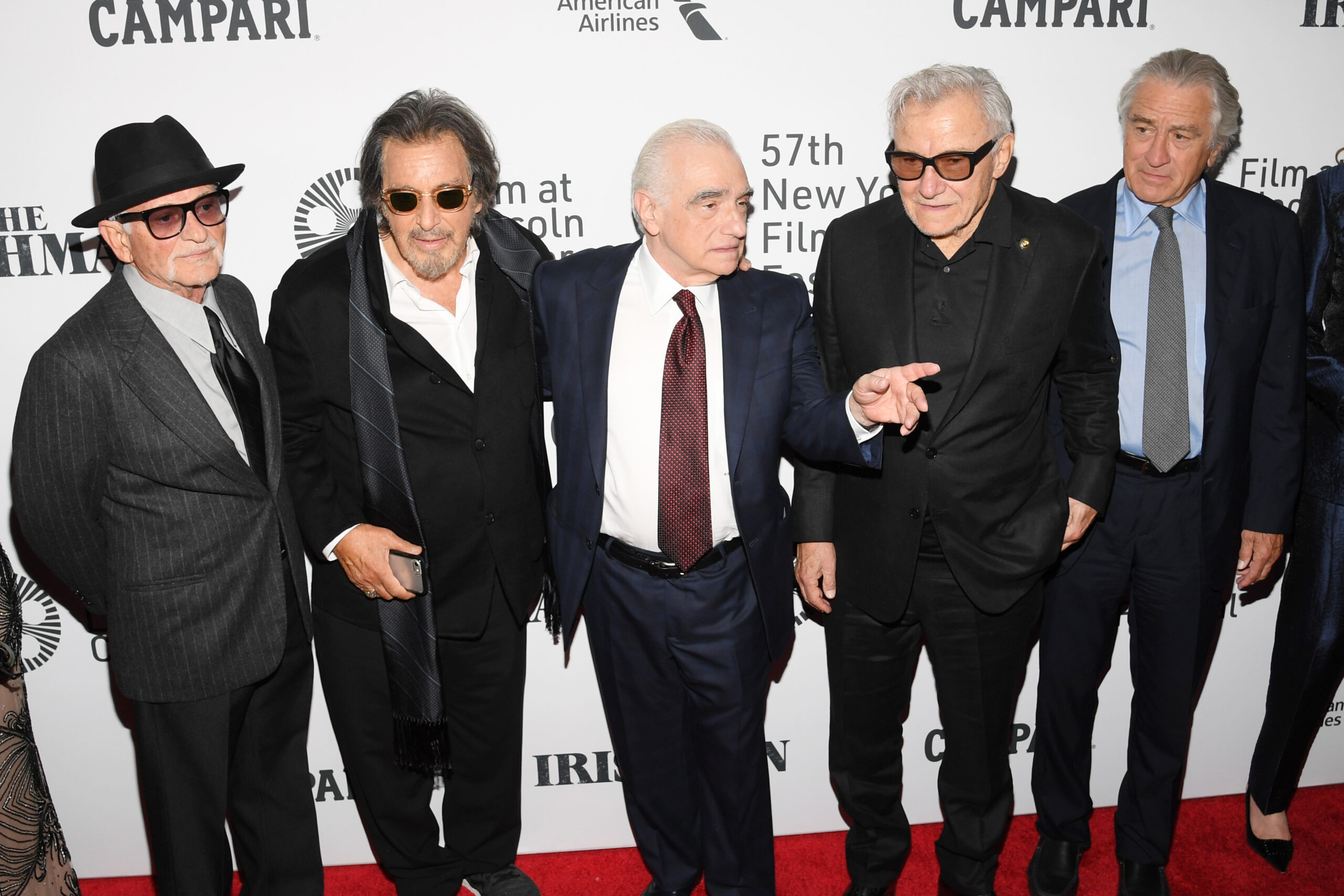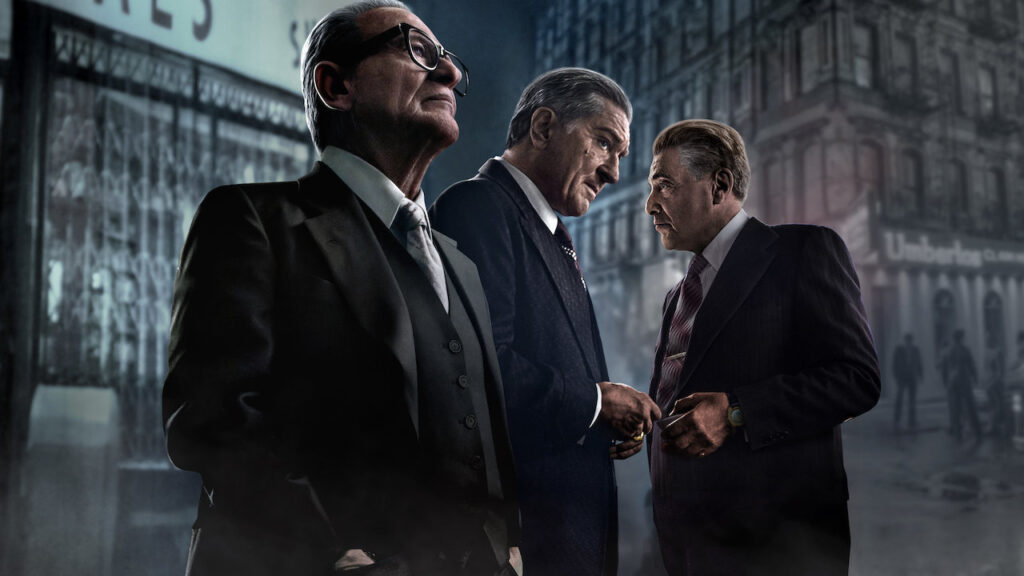Veteran filmmaker Martin Scorsese returns with a mysterious, thrilling, revengeful, and overall philosophical gangster film The Irishman. When names like Robert De Niro, Al Pacino, Joe Pesci, and Harvey Keitel are associated with a film, the expectations reach the sky. All these greats, whom viewers know for decades, come together on a platform and deliver a cinematic masterpiece and extravaganza. Even though Scorsese joins hands with the SVOD platform Netflix, the film does not get the form of a television mini-series, rather it is shaped up as a three-and-a-half-hours film which does not let viewers miss a single minute. Scorsese largely uses de-aging technology in the film and the budget skyrockets to as high as $159 million making it the most expensive film in his career.

The Irishman is based on the 2004 non-fiction book I Heard You Paint Houses by Charles Brandt. The book tells the story of a hitman Frank Sheeran (Robert De Niro), who confessed to the author killing former Teamsters president Jimmy Hoffa in a nursing home shortly before his death. The screenplay of the film is written by Steven Zaillian. Frank Sheeran works as a meat delivery truck driver in 1950s Philadelphia and sells some of his shipments to local gangster Skinny Razor (Bobby Cannavale) for extra income. Sheeran is caught and sued by his employer but lawyer Bill Bufalino (Ray Romano) gets his case dismissed in the court.
Bill introduces Sheeran to his cousin Russell Bufalino (Joe Pesci), head of Northeastern Pennsylvania crime family. The friendship between the two men begins to grow and Sheeran becomes a close aide of Russell. Sheeran starts “Painting houses”, a phrase used amongst gangsters for referring to contact-murder, for Russell. Russell introduces Sheeran to his friend and collaborator Jimmy Hoffa (Al Pacino), President of the International Brotherhood of Teamsters. An extremely popular, powerful, and charismatic leader Hoffa is believed to be as popular as The Beatles and Elvis Presley. Sheeran gets closer to Hoffa as well and becomes his chief bodyguard.
John F. Kennedy is elected as the President of the United States of America in 1960. Jimmy Hoffa does not have much rapport with the President. The Attorney General and president’s brother Robert Kennedy forms a “Get Hoffa” squad to oust him from the Teamsters. Hoffa is arrested on the charge of Jury tampering in 1964. His sentence is commuted by President Richard Nixon in 1971 but he is ordered by the court not to be involved in any Teamsters activity until 1980. While released on parole, he tries to regain his position as the President of the Teamsters. His relationships with other Teamsters leaders and mafia bosses deteriorate and he is warned multiple times. Hoffa does not listen to any accusation and keeps belittling other leaders.
The other mafia bosses approve Hoffa’s murder in 1975 and Sheeran is chosen to pull the trigger. While on their way to attend the wedding reception of Bill’s daughter, Russell informs this decision to Sheeran. Hoffa is framed scheduling a meeting with Anthony “Tony Pro” Provenzano and Anthony “Tony Jack” Giacalone. Sheeran along with Sally Bugs and Chuckie O’Brien drive Hoffa to a house in a suburban area of Detroit. Sheeran and Hoffa enter the house and the other two men drive off. After entering the house and seeing it empty, Hoffa realizes that he has been framed. When he is about to turn back, Sheeran shoots on his head twice at point-blank range. His body is cremated later.

Scorsese’s The Irishman is more of a philosophical film than a gangster film. Metaphysical aspects of Sheeran’s life is depicted in the last thirty minutes of the film. Sheeran became so close to Hoffa that the latter would consider him a family member and not merely a bodyguard. Breaking this trust and murdering his close friend was not easy for Sheeran but he did not have any other option. Those Mafia bosses knew that Sheeran would try to save Hoffa at any cost if he was not selected as the hitman. He did not forget his former boss who was a father figure to him and kept regretting the murder throughout his life. He wore two precious things gifted by two men, whom he respected the most, until his final moment. The gold watch was gifted by Jimmy Hoffa and the gold ring was gifted by Russell Bufalino.
After the confession when the priest is about to leave his room, he tells the priest to keep the door ajar. Hoffa used to keep doors ajar, which was emulated by Sheeran. Such was the love and respect of a bodyguard for his beloved boss. People keep regretting their activities throughout their lives and confess their crimes even though not immediately. Life itself is a great teacher. The life decisions taken in a particular phase may not seem to be correct in other phases. In the beloved Lord’s holy universe, human beings tend to seek redemptions for their crimes or guilt while approaching the final days. The main idea behind making this film is probably to explore the ideologies surrounding confession and redemption. A great filmmaker like Martin Scorsese is not interested simply to make a mobster movie. He is more interested to traverse the pathways of life through the silver screen.

With The Irishman, Martin Scorsese reaches the cinematic level that can only be achieved by a master. A filmmaker’s ability is proven when even a single shot in the three-and-a-half-hours film does not look redundant. The film is so perfectly woven that all the actors are able to mark their presence. Scorsese’s contribution to the arena of cinema has always been beyond doubts. This film showcases his capabilities as a mature and sensible artist. Steven Zaillian’s screenplay is funny at the same time strong enough. Robert De Niro’s restraint acting is a treasure of the film. The portrayal of Frank Sheeran cannot be more perfect. Al Pacino as Jimmy Hoffa is brilliant as usual and dominates each scene wherein he is present. The person who is the most dynamic yet calm is Joe Pesci. Pesci’s portrayal of Russell Bufalino brings weight and adds multiple dimensions to the character. Even though they know each other for decades, this is the first association of Scorsese with Al Pacino. The director and these veteran actors have known each other both personally and professionally for decades. So, when they share screen space, the performances turn out to be magical.
Thelma Schoonmaker, who has worked with Scorsese over five decades, needs no introduction. Schoonmaker’s editing in the film is simply extraordinary. The Irishman flows extremely dynamically because of the editing. Rodrigo Prieto has done a brilliant job as the cinematographer of the film. He used the “Three-headed-monster” camera tool to align with de-aging VFX technology. Three cameras were set up to capture the shots from three different angles. Sheeran was an introvert person. So, Scorsese wanted to capture Sheeran on static or panning shots. Though Prieto and Scorsese have used crane and dolly shots in a few scenes, the cinematography throughout the film is mostly static and calm. The film has been criticized for having less screen presence of the actresses. In spite of having fewer dialogues, Lucy Gallina and Anna Paquin deserve applause as young and older Peggy Sheeran, Frank Sheeran’s daughter. Harvey Keitel as Angelo Bruno, Ray Romano as Bill Bufalino, and the remaining cast have done justice to their roles. Martin Scorsese’s The Irishman will remain as a cult film for years to come.
